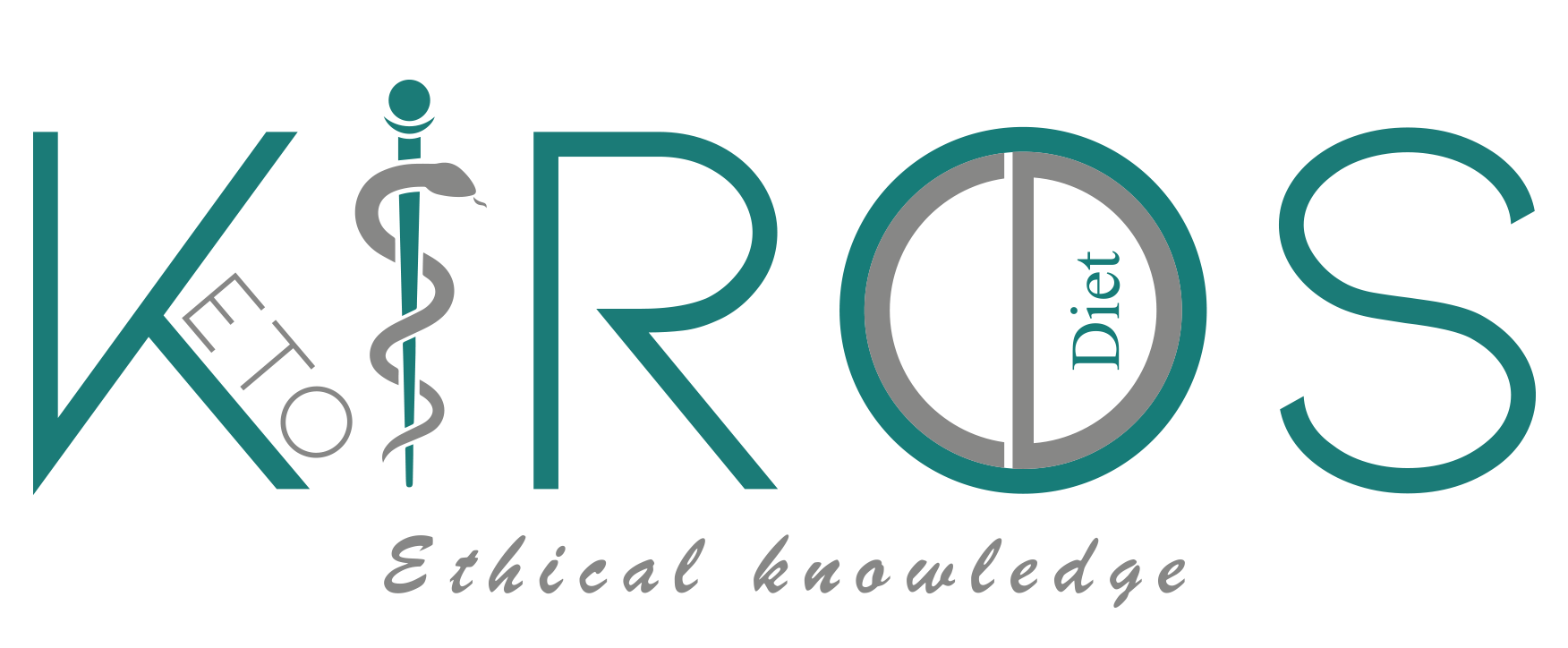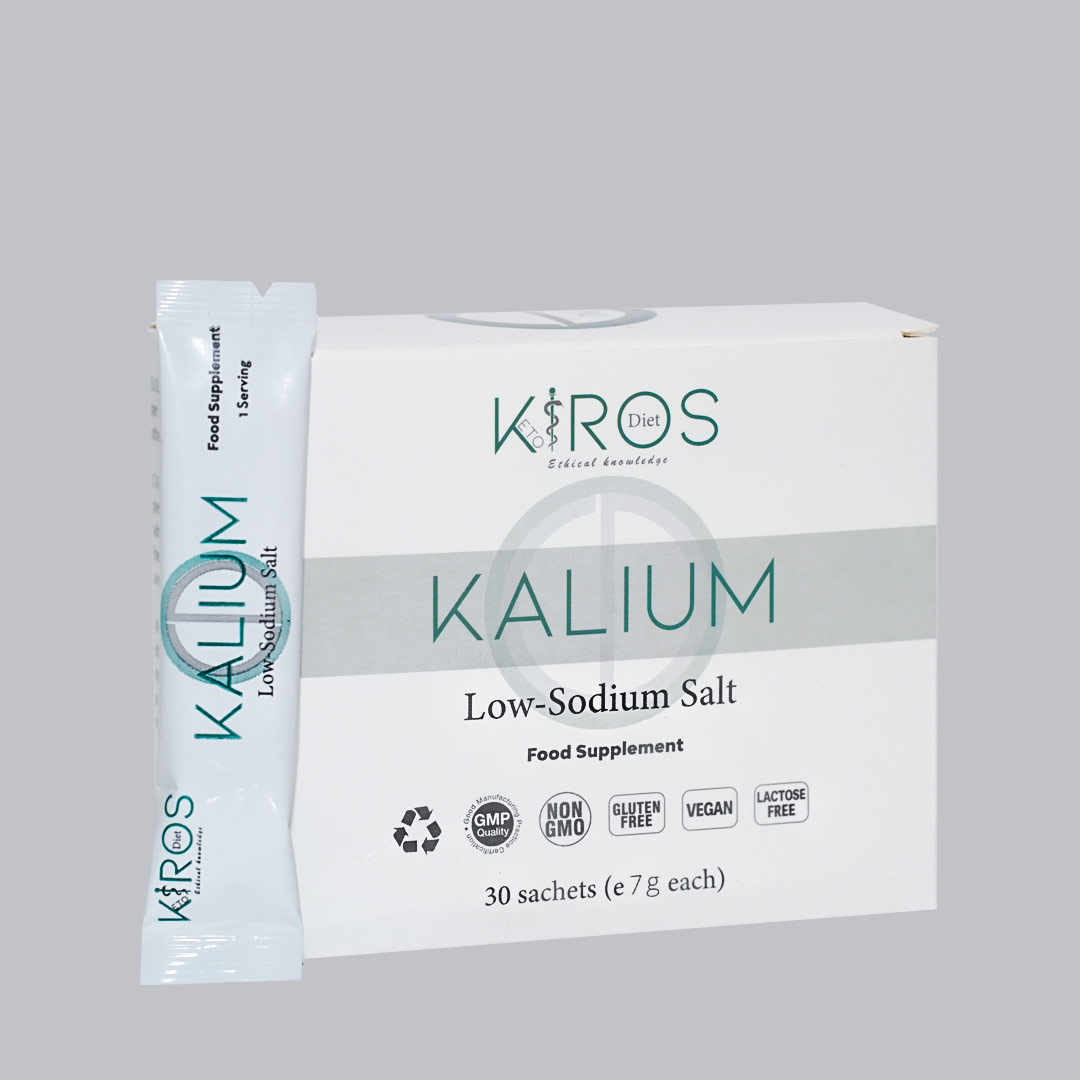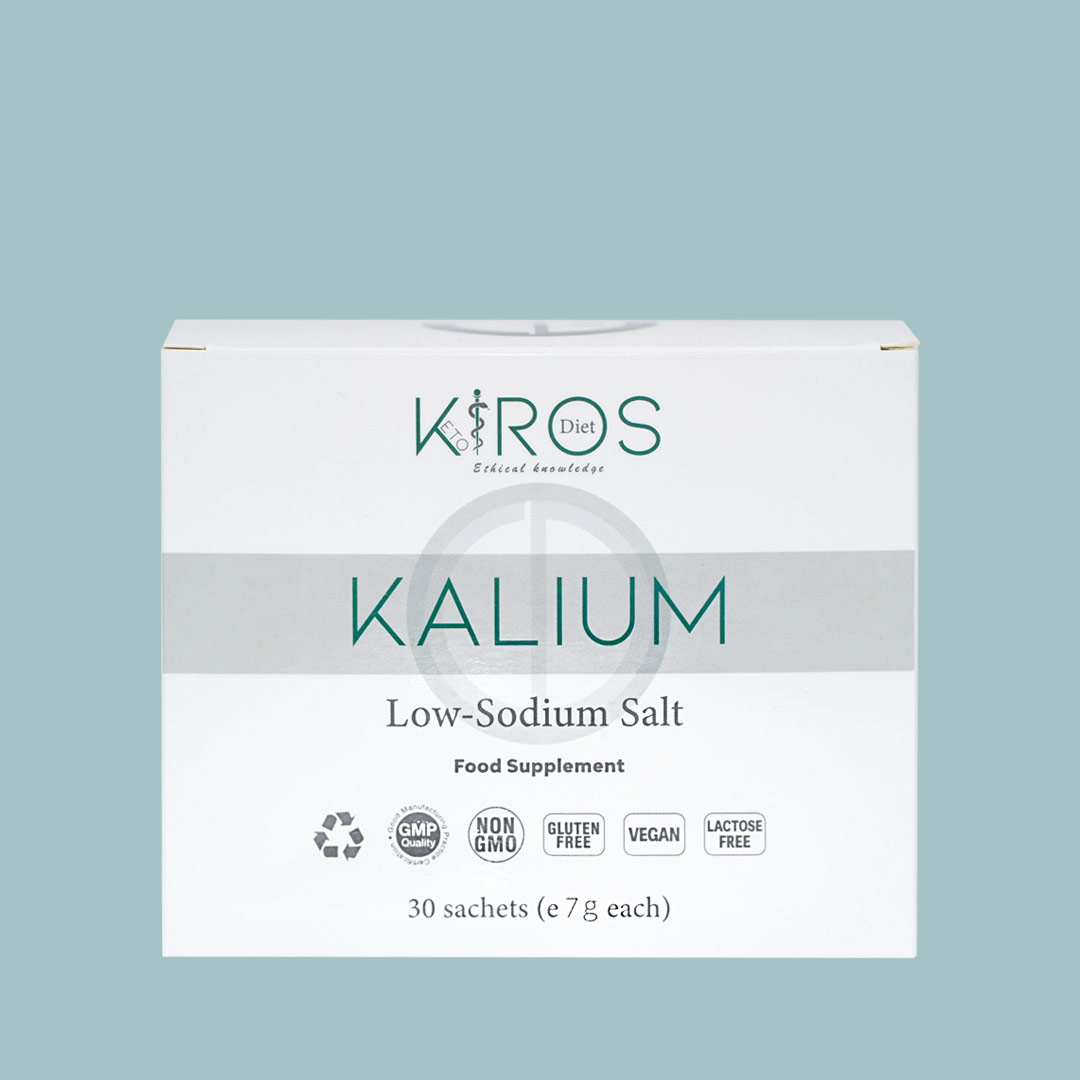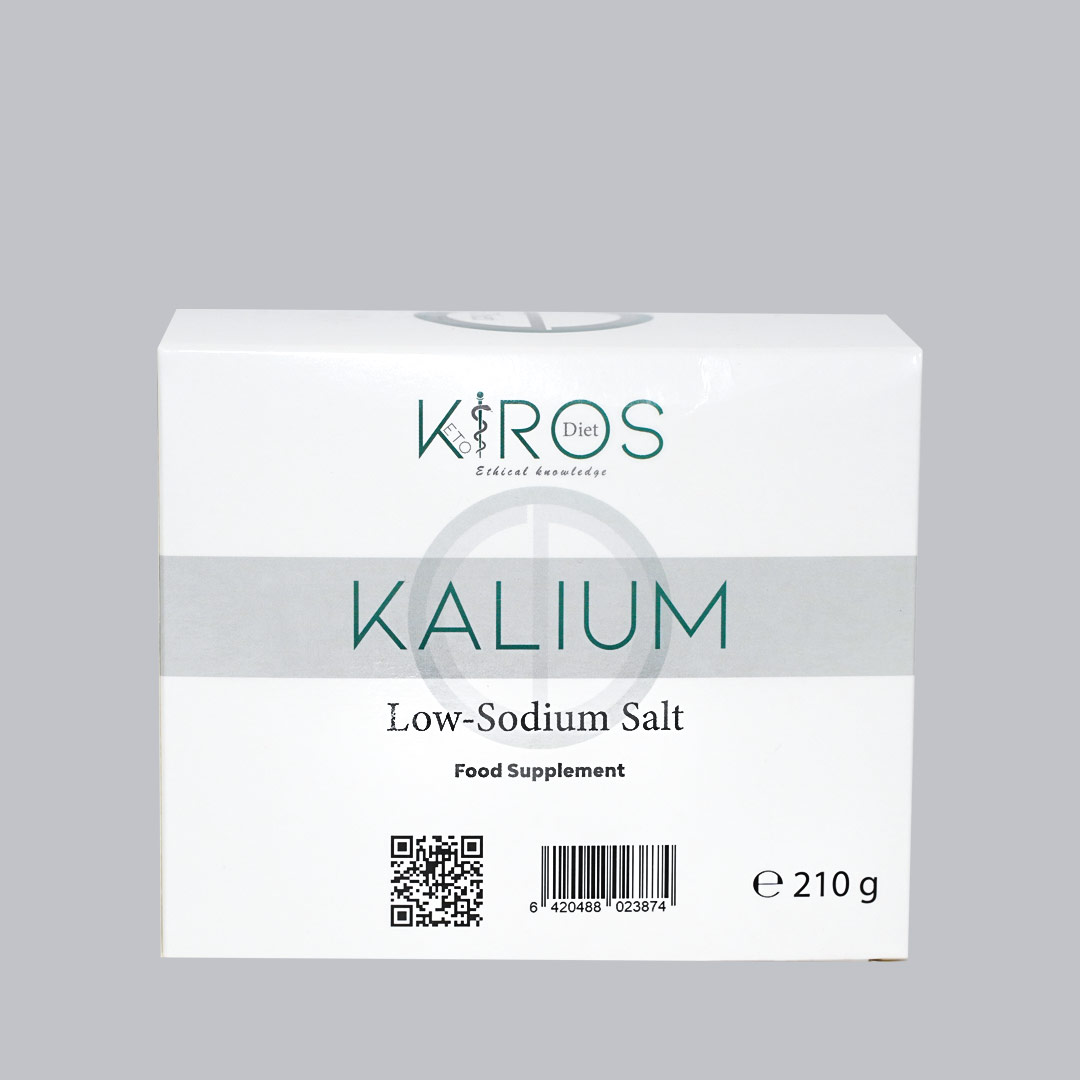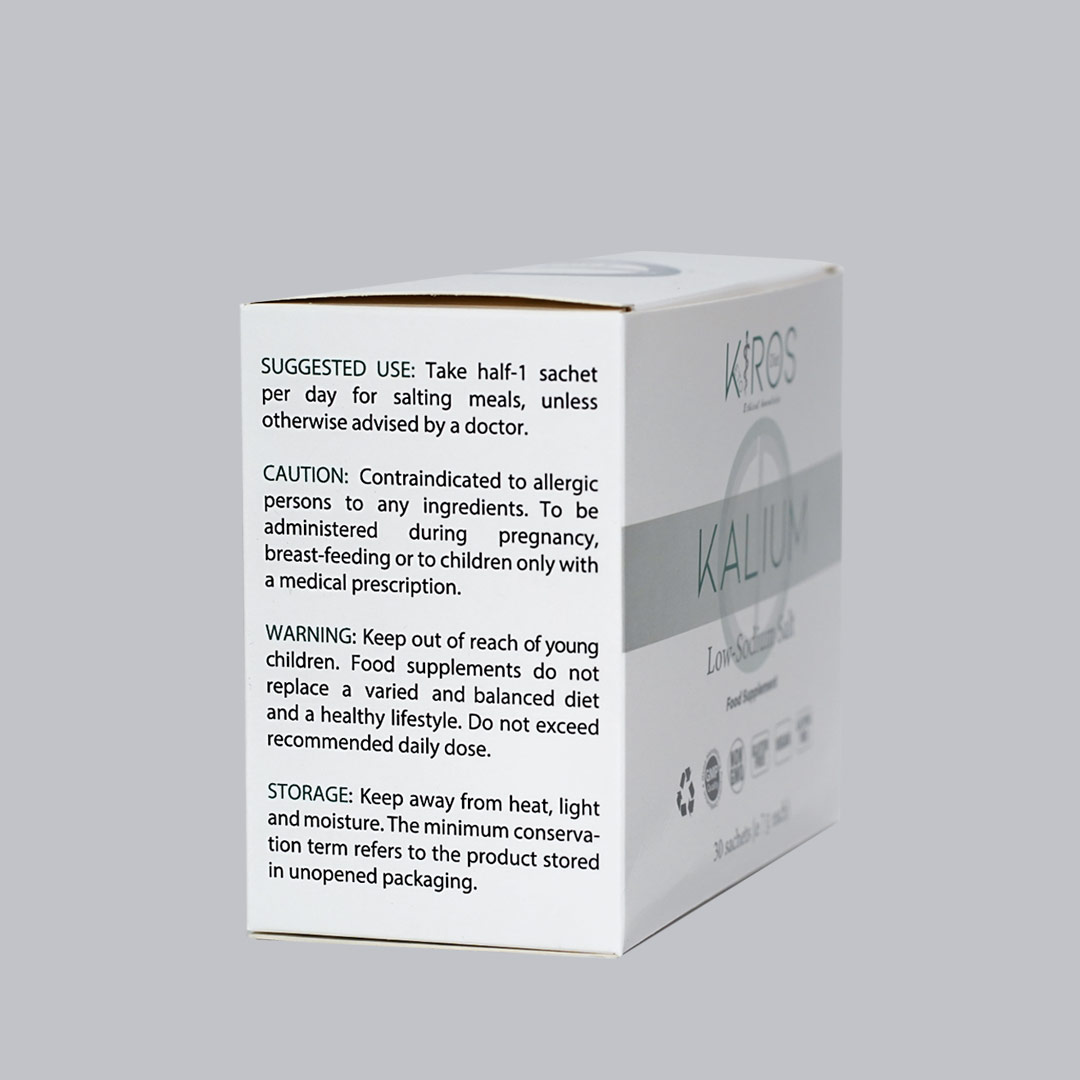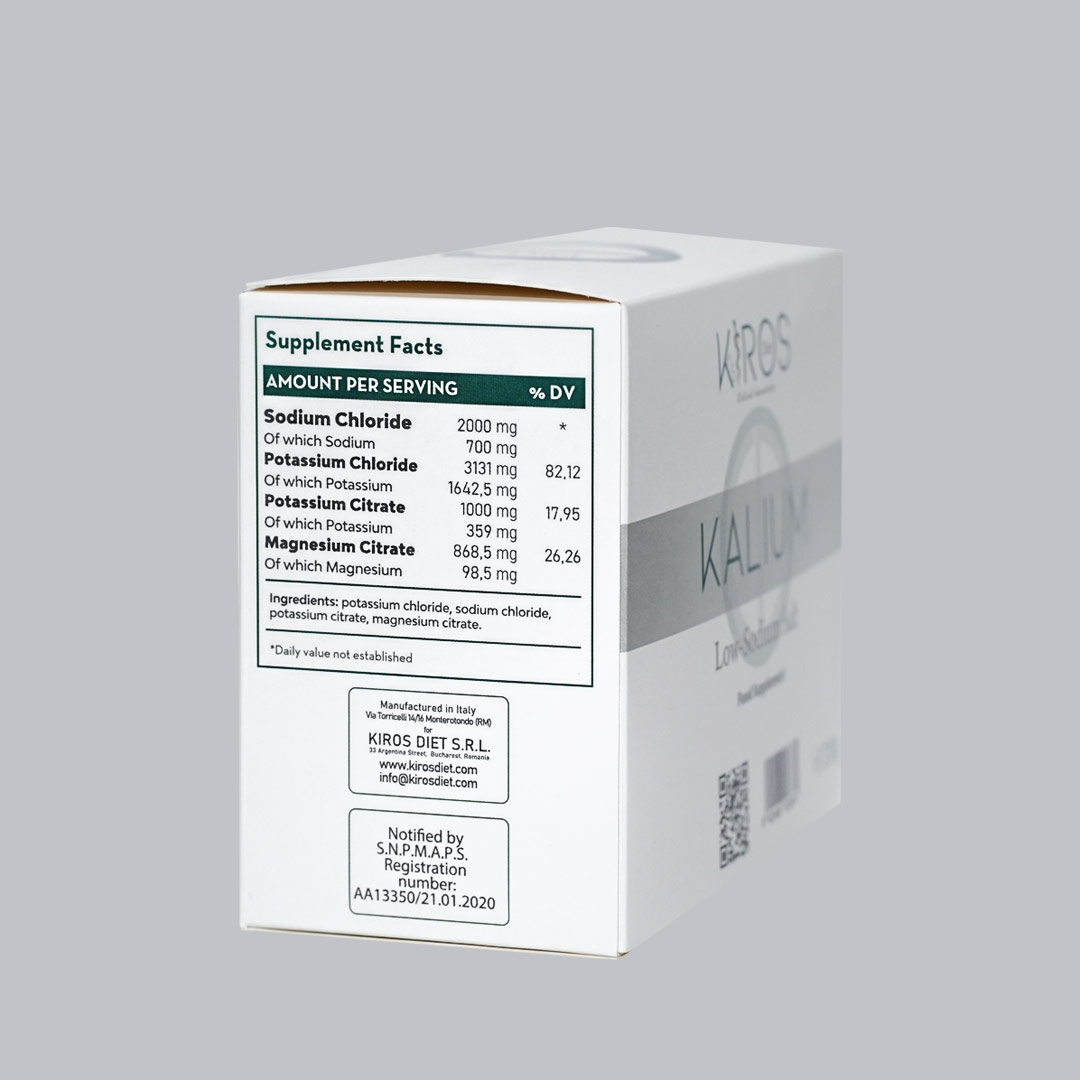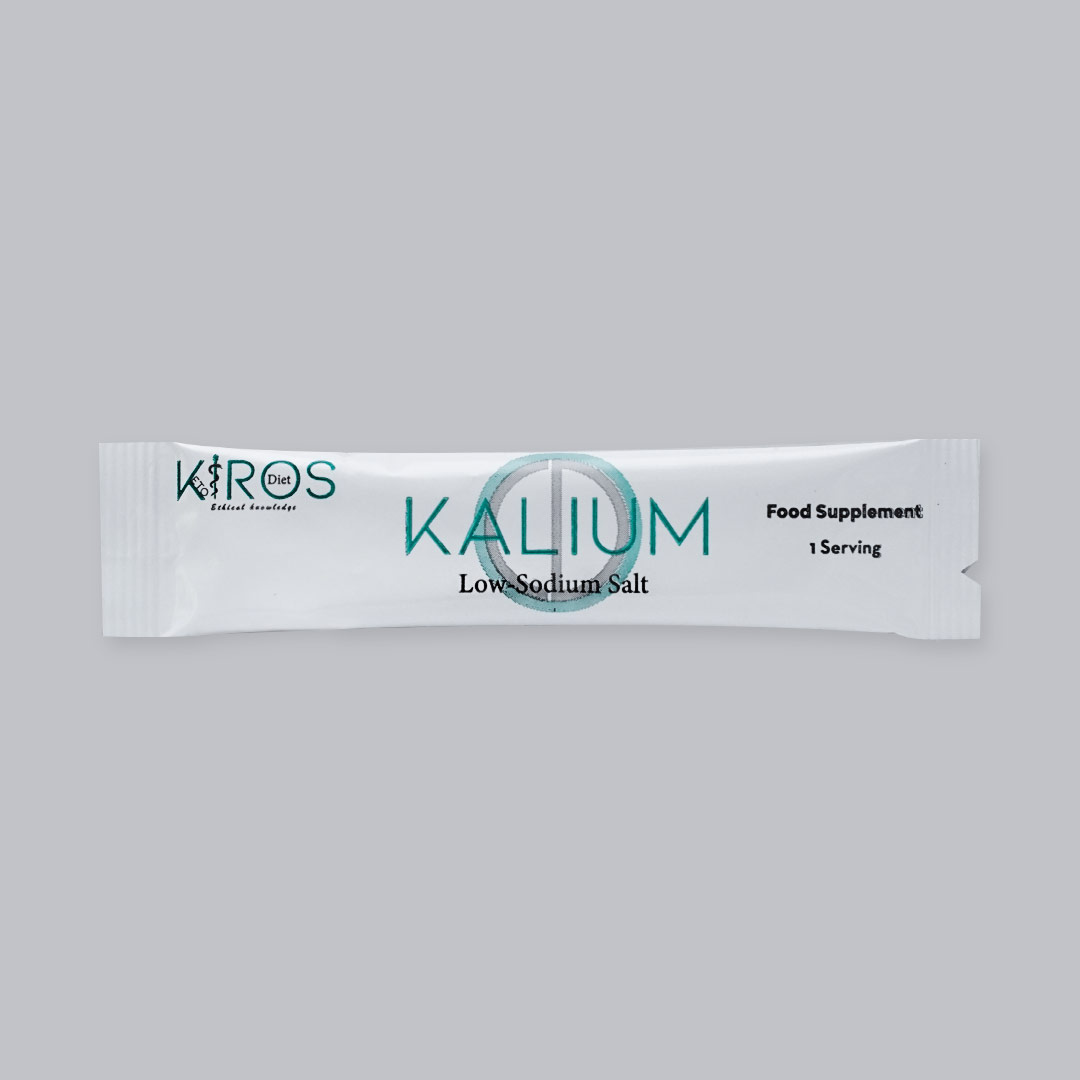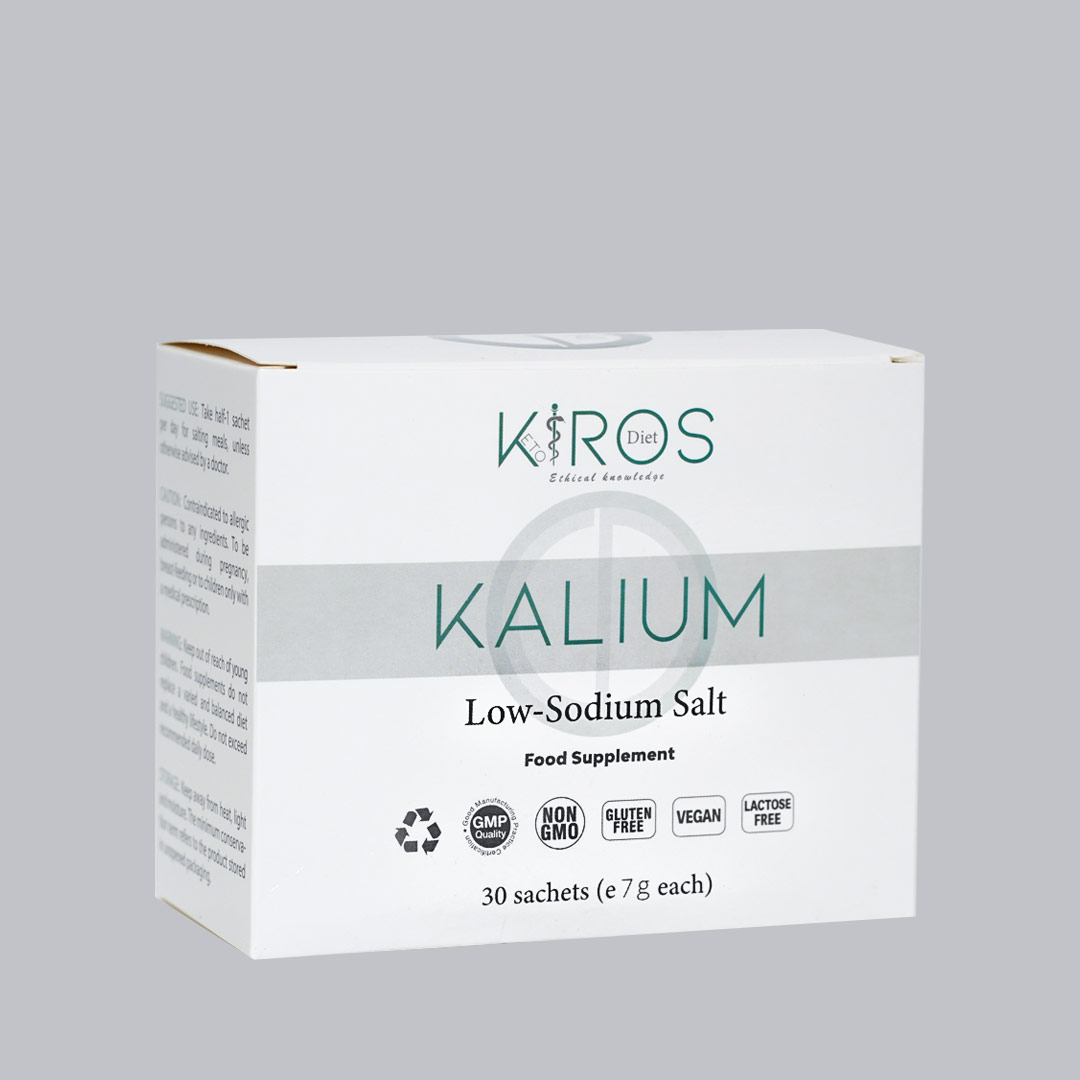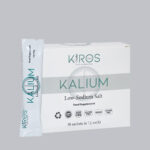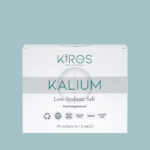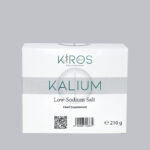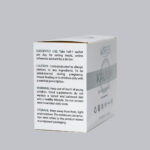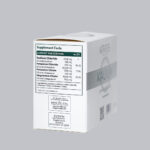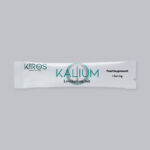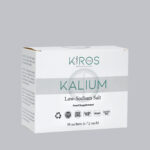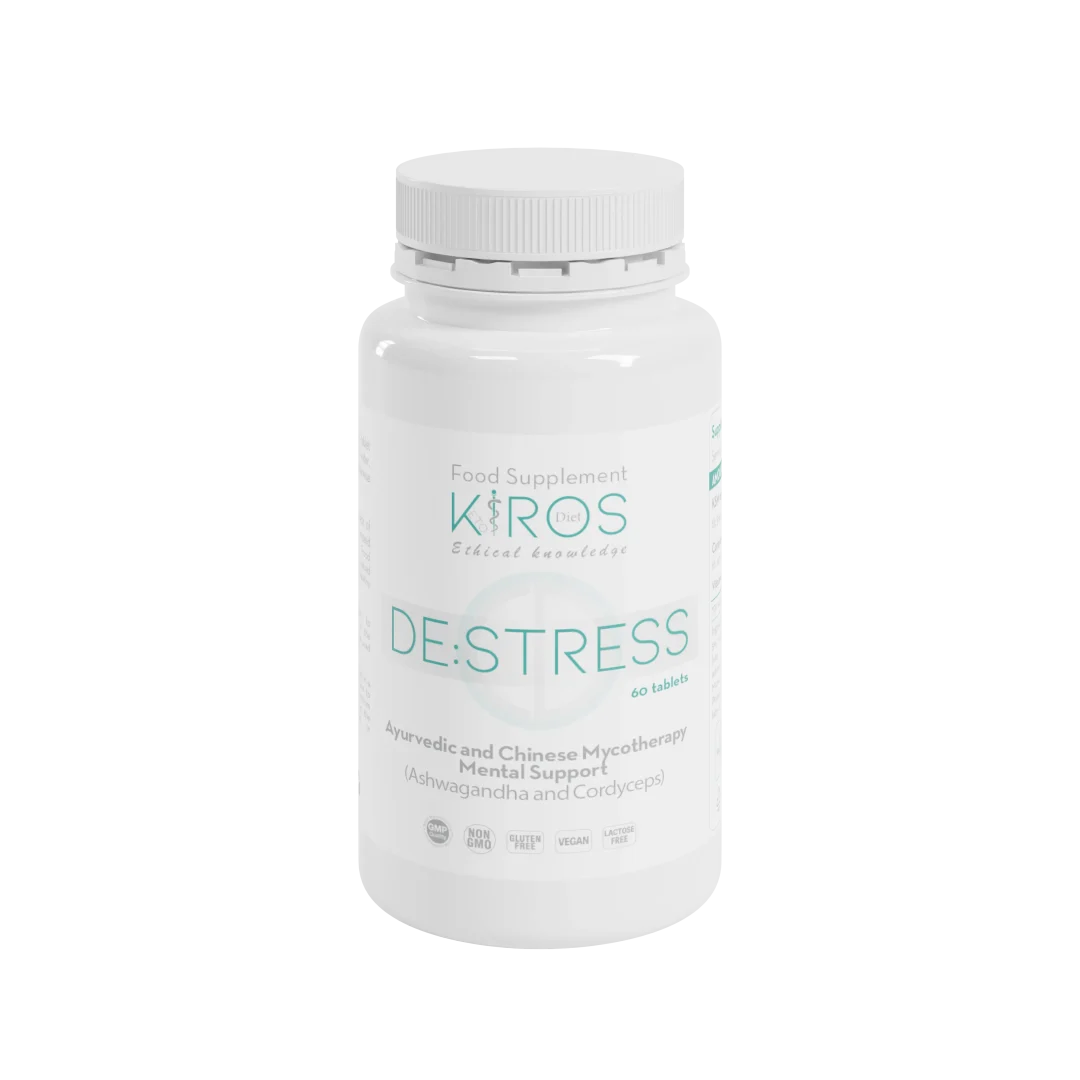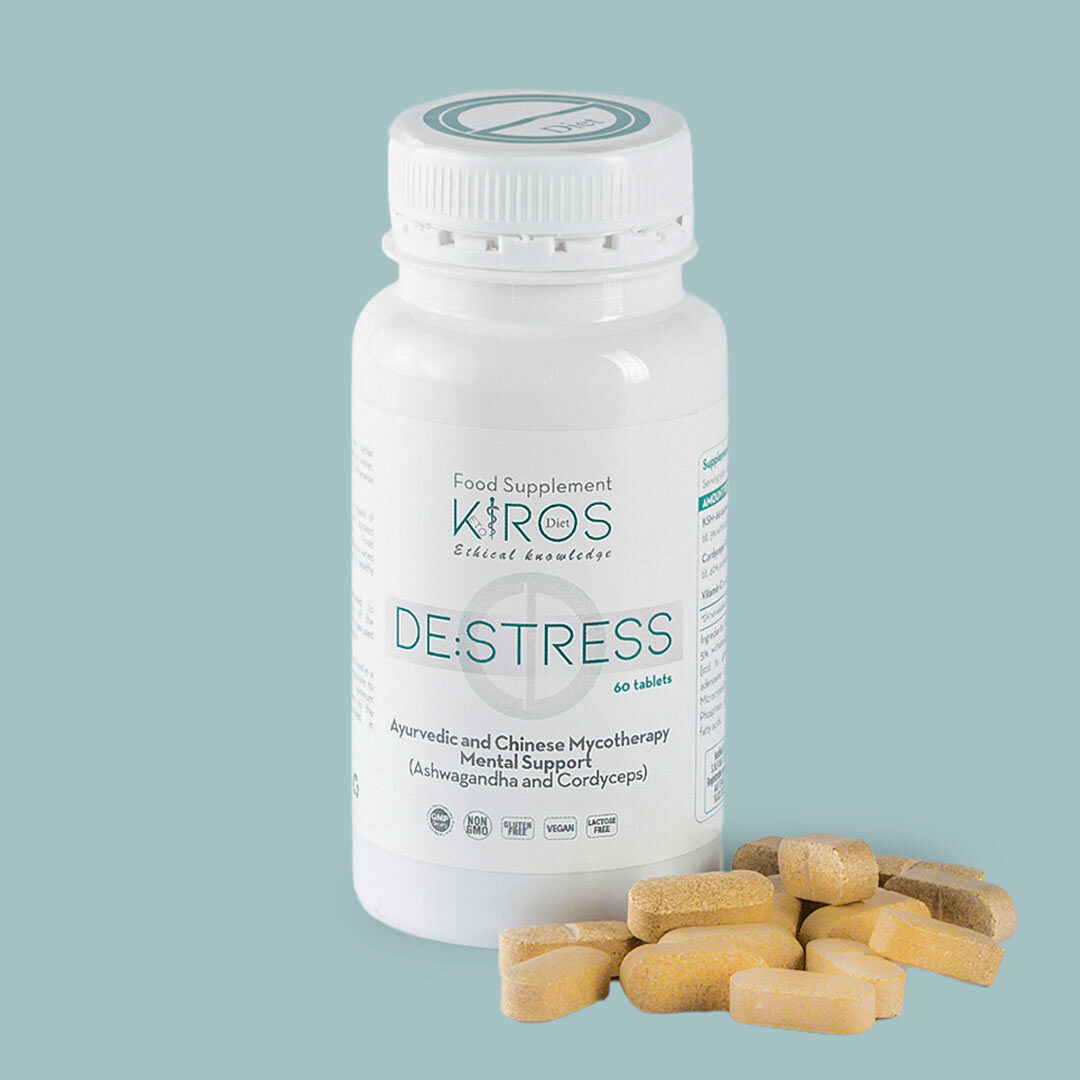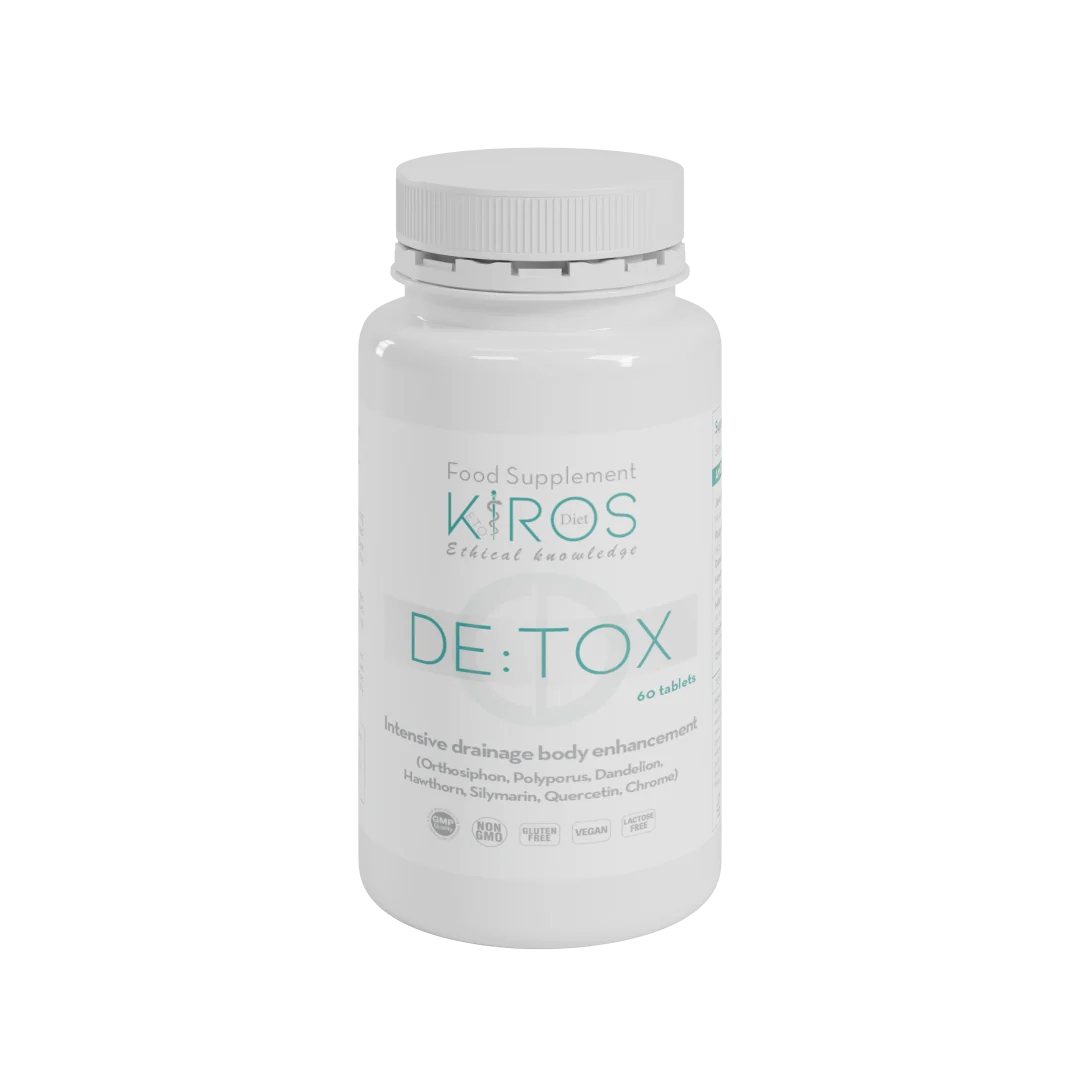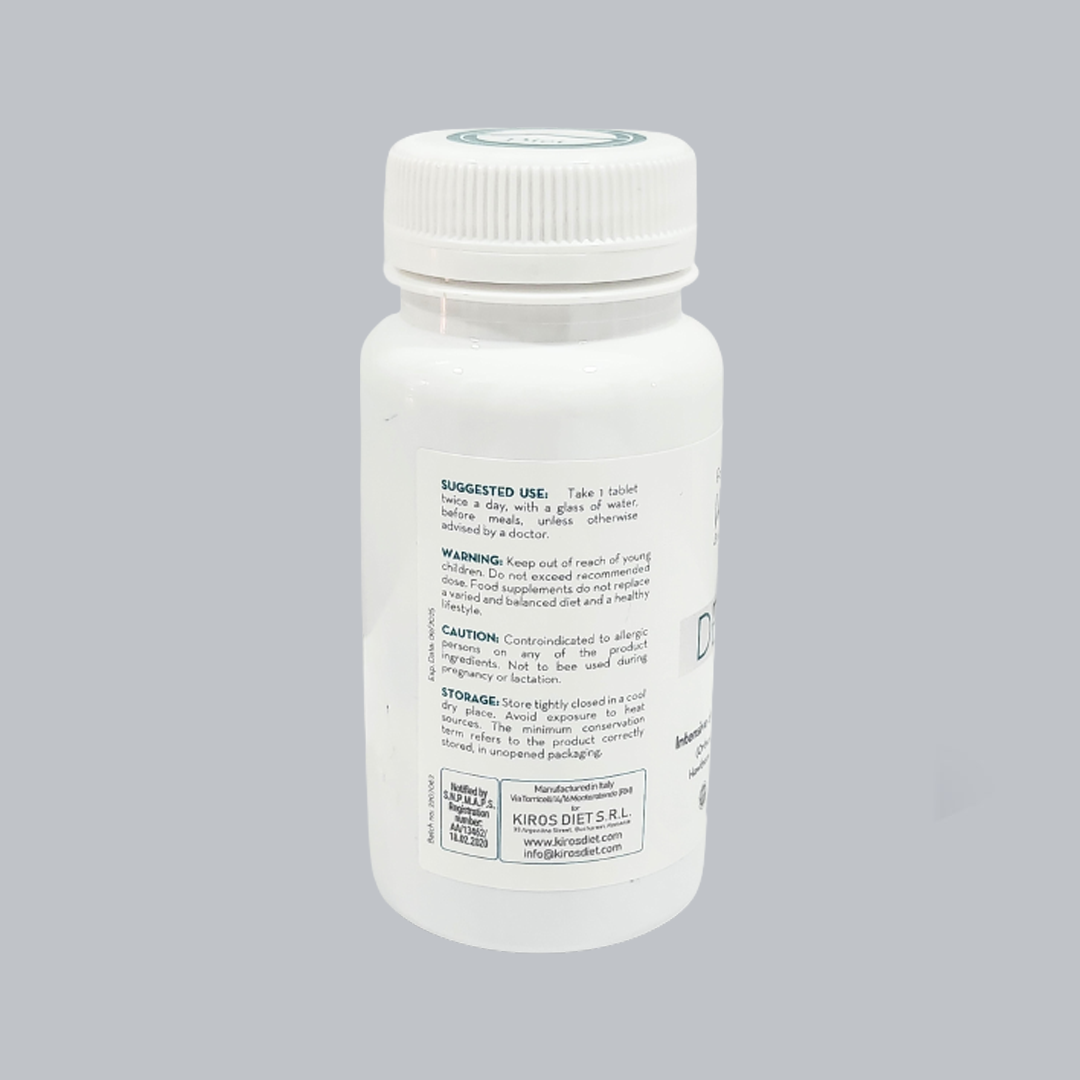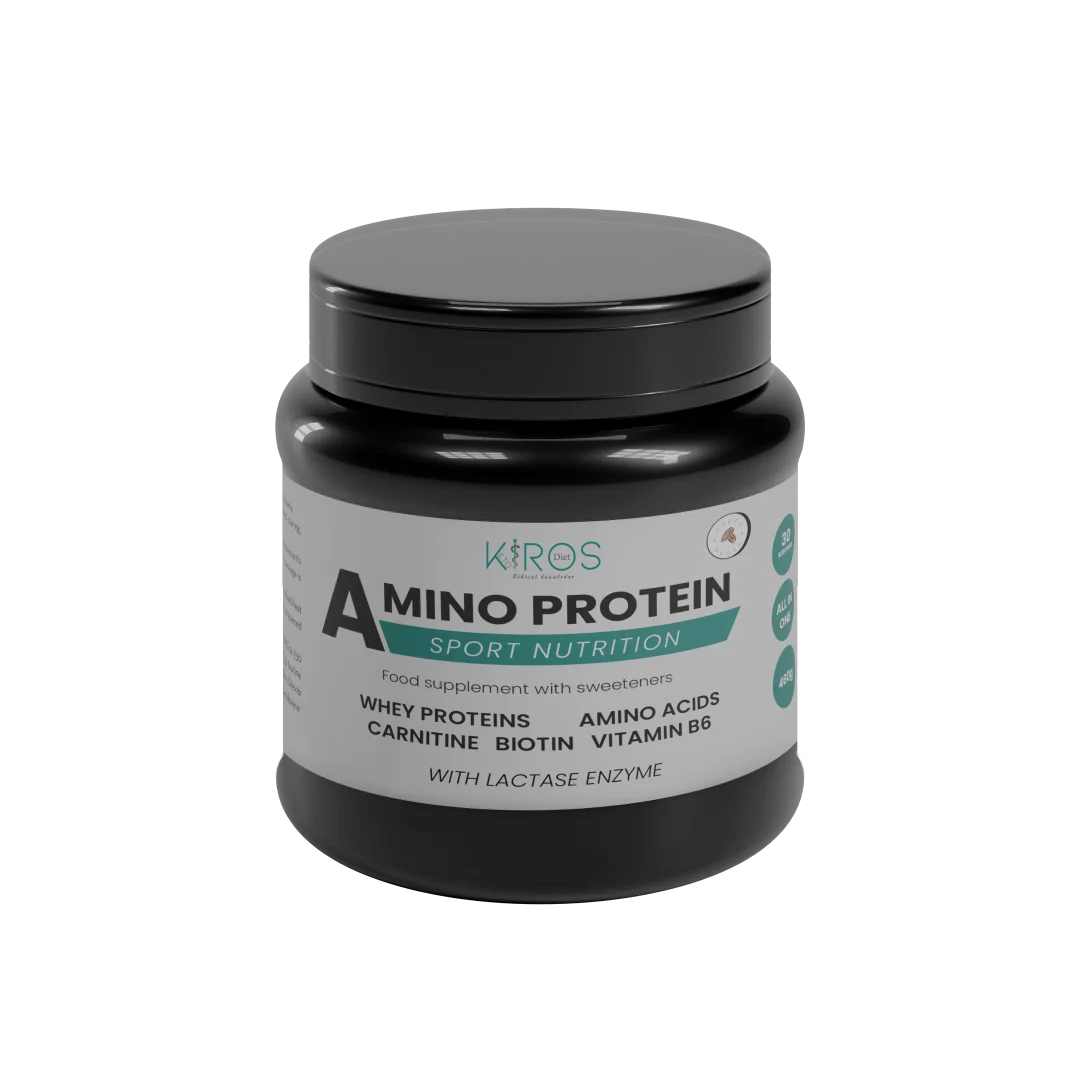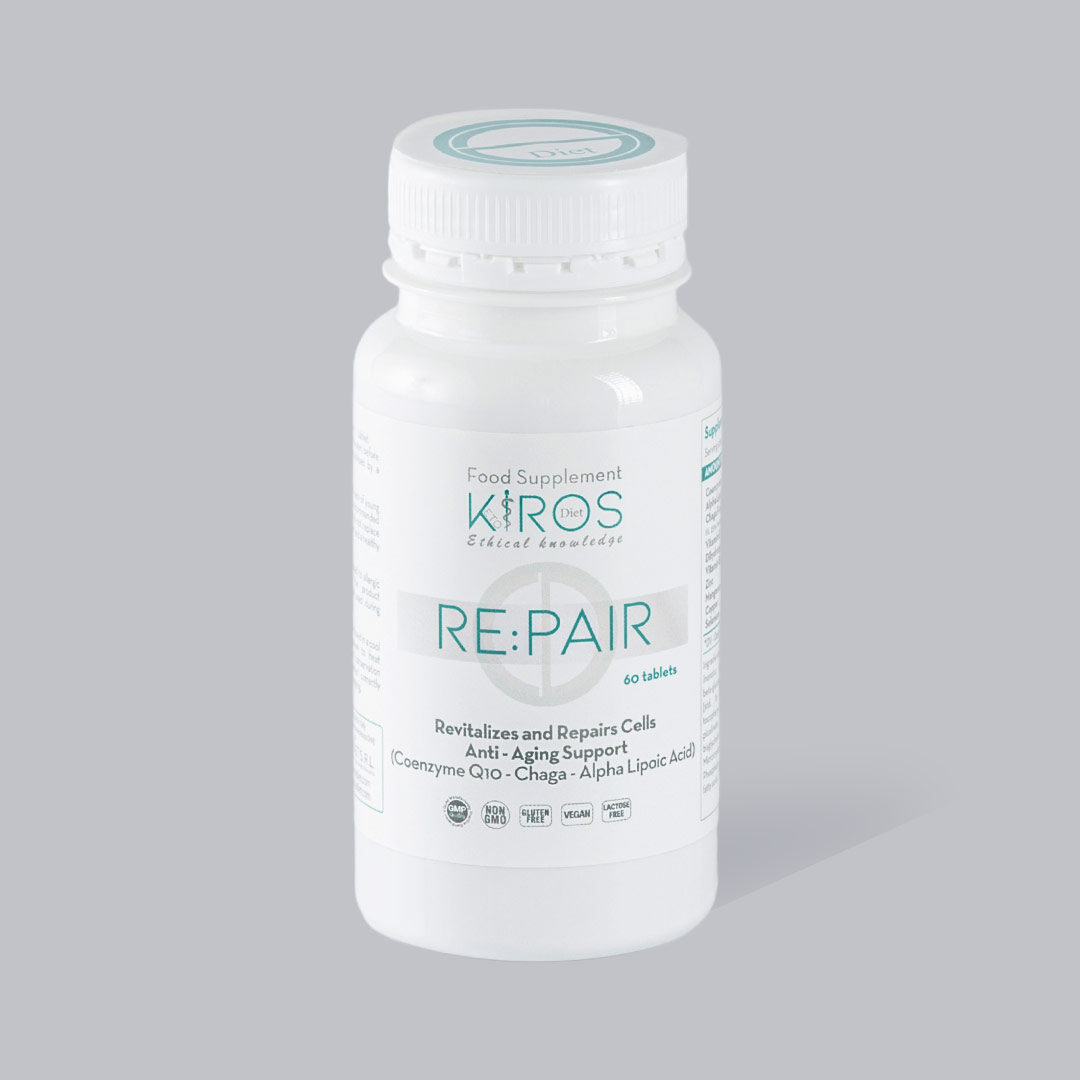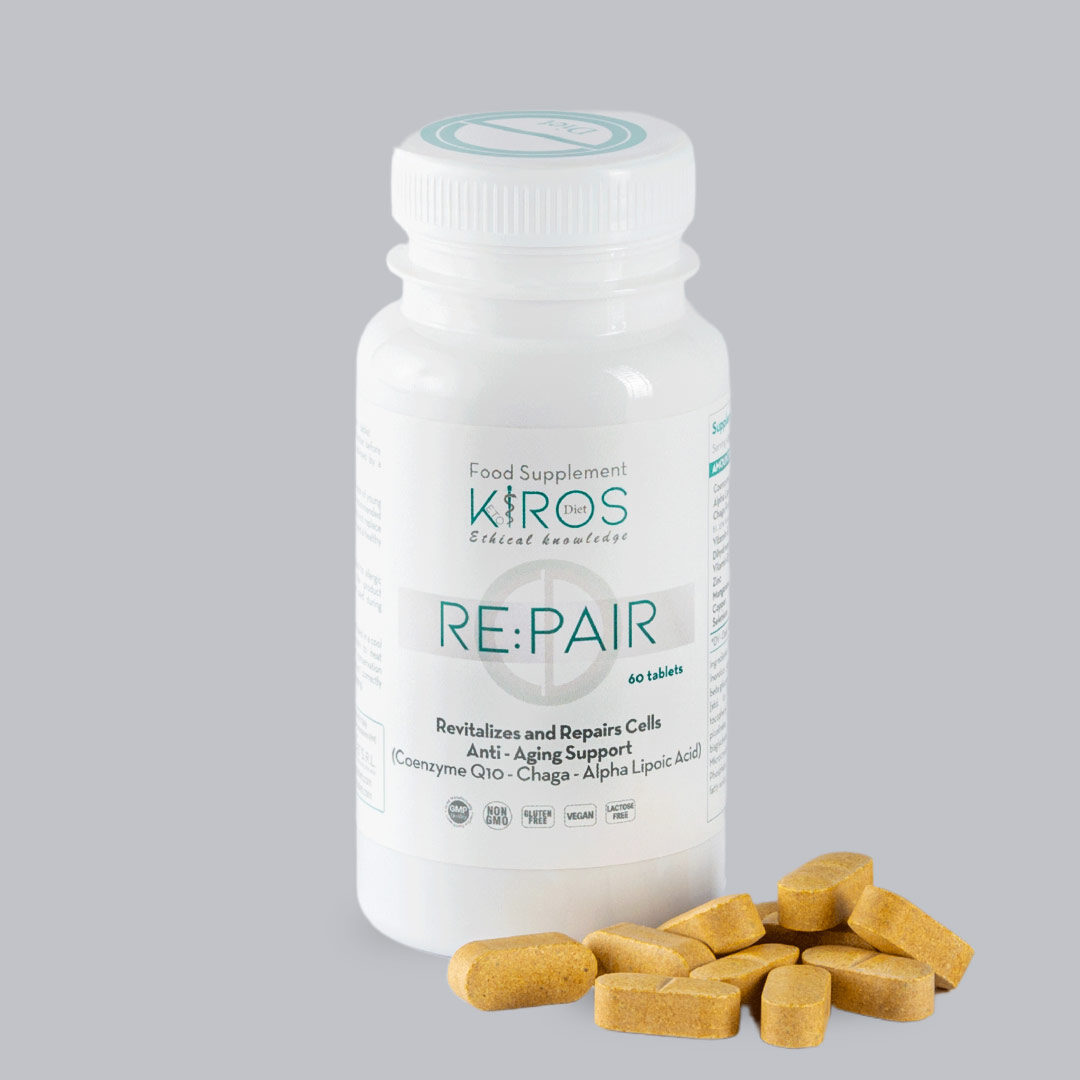KALIUM
Suitable for diets, low sodium content
- Himalaya salt
- Potassium choride
- Potassium citrate
- Sodium choride
- Magnesium choride
- Calcium carbonate
- Bamboo resin powder (Bambusa arundinaceae) with 50% silicon
In 240 g bottle, provides: potassium 2018 mg
EFFECTIVENESS
KALIUM. It is a low-sodium dietary salt that replaces the normal cooking salt indicated in all those medical conditions that require a reduction of sodium intake with food. Its use is indicated in substitution of common cooking salt (sodium chloride), both raw and during the cooking of any kind of food. A low-sodium diet may be prescribed by a physician or nutritionist for the treatment of edematous conditions (water retention, edema caused by heart, liver or kidney disease) and for the dietary treatment of high blood pressure.
The daily consumption of salt should be less than five grams, which is equivalent to about two grams of sodium. Salt consumption in the European adult population is on average about double the recommendations of the World Health Organization with an average consumption of more than 9-11 grams per day. The excess of sodium favors the increase of blood pressure, the main cause of heart attack and stroke, kidney stones, osteoporosis, and some cancers: in particular that of the stomach
KALIUM. It is a dietary salt with low sodium content and represents the ideal substitute of normal cooking salt.
CHARACTERISTICS OF THE COMPONENTS
KALIUM contains about 60% less sodium than common table salt, partly replaced by a high content of potassium (instead absent in table salt). Increased potassium intake may help reduce blood pressure and increase urinary excretion of sodium. KALIUM contains 2 g per serving of pure Himalayan crystal salt consisting of over 84 minerals and natural elements1.
For the first time a preparation based on this combination of herbs and active ingredients is proposed and marketed
STUDIES
Numerous scientific studies have shown how sodium negatively affects the ability to absorb calcium that we ingest, favoring its elimination through the urine. The problem is not trivial, considering that the contemporary Western diet is characterized by a high intake of sodium, much higher than the individual requirements recommended by the World Health Organization.
Table salt is composed of 97.5% sodium chloride and 2.5% chemicals such as iodine, adsorbents, sugar and is devoid of useful trace minerals and lacking in nutritional value. The body has difficulty disposing of it naturally and healthily, which can lead to tissue inflammation, water retention, and high blood pressure2,3. Excess sodium promotes increased blood pressure, a leading cause of heart attack and stroke, kidney stones, and osteoporosis. Low-sodium diets are therapeutically effective but generally considered impossible or difficult to implement. One strategy may be to replace sodium with other minerals, such as potassium chloride, which organoleptically has the same flavor without having negative health consequences. In one clinical trial, reducing sodium intake accompanied by dietary potassium supplementation resulted in an increase in subjects with optimal blood pressure (+ 2-5%) and a significant reduction in risk levels for cardiovascular disease and mortality (- 6- 11%)4.
The efficacy of a prophylactic/therapeutic low-sodium diet should also be evaluated against the side effects of drug therapy with daily intake of antihypertensives. Clinical and epidemiological studies suggest that potassium chloride intake lowers blood pressure and reduces the need for antihypertensive medication in hypertensive men on a low-sodium diet5,6. In another study, increasing potassium intake to recommended levels significantly reduces systolic blood pressure in Western populations from 1.7 to 3.2 mm Hg, with a predicted reduction in risk of stroke mortality from 8% to 15% and risk of heart disease mortality from 6% to 11%7.
LITERATURE
- Hendel, B., & Ferreira, P. (2003). Water and Salt, the Essence of Life.Natural Resources, 251.
- Meneely, G. R., & Battarbee, H. D. (1976). High sodium-low potassium environment and hypertension. The American journal of cardiology, 38(6), 768-785.
- Holbrook, J. T., Patterson, K. Y., Bodner, J. E., Douglas, L. W., Veillon, C., Kelsay, J. L., … & Smith Jr, J. C. (1984). Sodium and potassium intake and balance in adults consuming self-selected diets. The American journal of clinical nutrition, 40(4), 786-793.
- van Mierlo, L. A., Greyling, A., Zock, P. L., Kok, F. J., & Geleijnse, J. M. (2010). Suboptimal potassium intake and potential impact on population blood pressure.Archives of internal medicine, 170(16), 1501-1502.
- Grimm Jr, R. H., Neaton, J. D., Elmer, P. J., Svendsen, K. H., Levin, J., Segal, M., … & LaBounty, R. K. (1990). The influence of oral potassium chloride on blood pressure in hypertensive men on a low-sodium diet. New England Journal of Medicine, 322(9), 569-574.
- Morris Jr, R. C., Sebastian, A., Forman, A., Tanaka, M., & Schmidlin, O. (1999). Normotensive salt sensitivity: effects of race and dietary potassium. Hypertension, 33(1), 18-23.
- Prospective Studies Collaboration. (2002). Age-specific relevance of usual blood pressure to vascular mortality: a meta-analysis of individual data for one million adults in 61 prospective studies.The Lancet, 360(9349), 1903-1913.
